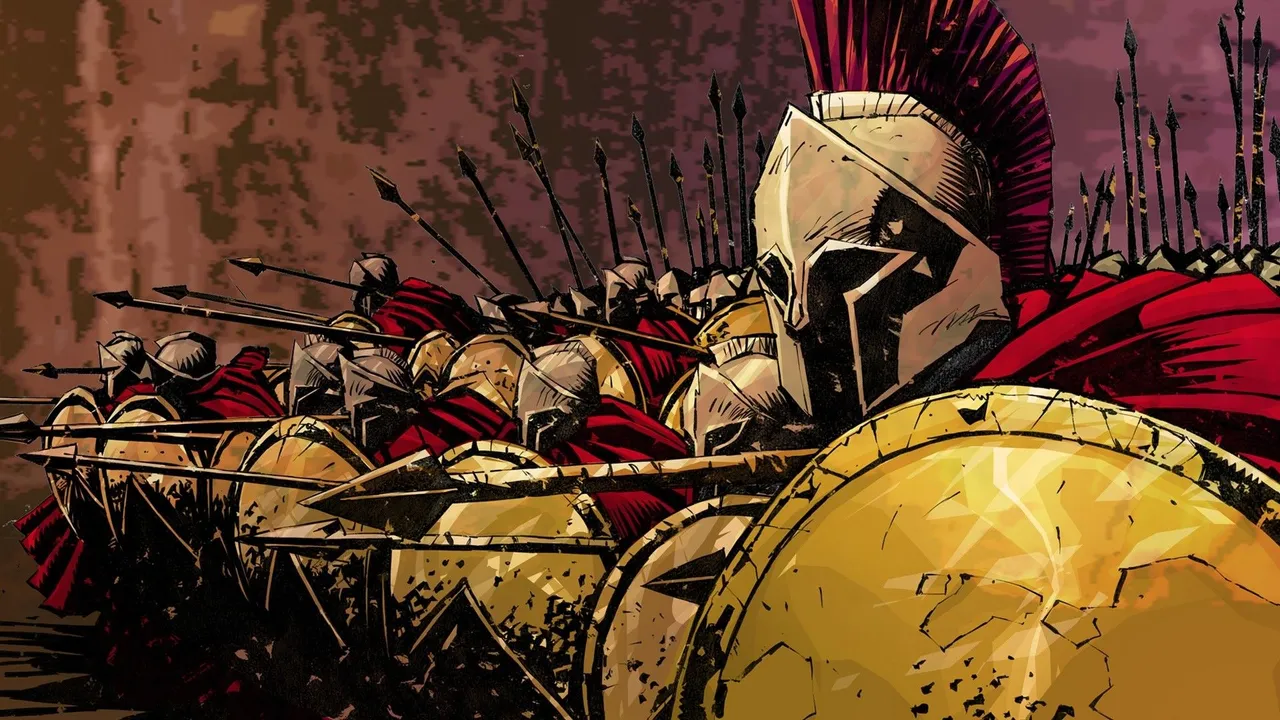Come & Take It

Social Elected Stake Based Blockchains can move act as one, like Spartans
The Social Defense to Preserve Censorship-resistance against Hostile Takeover Attempts
Account ownership at its core is fundamental. Owning your account, having social functions built into the core of the blockchain gives incredible agility to defend against hostile takeover attempts.
Social
Blockchains, regardless of the governance model, need a social element at the core. Without built-in censorship-resistant native social features like account & community list ownership, the chain owners will know very little about the nodes running the blockchain.
On a "social blockchain," stakeholders can know every node elected to consensus- maybe not by name but by reputation, work added, & stories they share. This connection between nodes & stakeholders adds tremendous agility.
Without a social connection, stakeholders lose the ability to communicate with nodes in a meaningful way.
On elected platforms without built-in social at the core, stakeholders will only vote when they need to, even if incentivized- worse, if incentivised, the chain is prone to centralisation. However, on socially oriented blockchains, voter participation is much more significant because social activity grows relationships between voters & nodes.
Elected social blockchains will have many different factions, people who agree & disagree, like & dislike each other; this is where decentralization comes into play. True communities are like families; not everyone agrees on everything, and differences in opinions are strong points.
Living Organism
Blockchain is code, usually open-sourced, voluntary to run, immutable & the future of how our online world will run. Blockchains adapt & grow to find flaws in governance; it acts like a living organism.
While blockchain is layer one, the most important is layer zero, the community; armor & weapons are only as useful as those who wield them.
Money Attacks
Stake-based systems are naturally collusion-resistance because of "skin in the game." Skin in the game, in this context, basically means any mechanism that holds individual contributors in a decision individually accountable for their contributions. If a group makes a harmful decision, those who approved the decision must suffer more than those who attempted to dissent; this avoids the "tragedy of the commons" inherent in voting systems.
Open-source software, which can be easily forked, combined with skin in the game principles, gives communities the power to hold the "nuclear option" and, as a side effect, removes the incentive for any would-be attacker to try and take over the network. The best offense is a good defense.
Suppose a system gets taken over by a harmful coalition. In that case, the community can come together and create an alternative version of the system, which has (mostly) the same rules except that it removes the power of the attacking coalition to control the system.
Forking is very easy in an open-source software context; the main challenge in creating a successful fork is usually gathering the legitimacy (game-theoretically viewed as a form of "common knowledge") needed to get all those who disagree with the main coalition's direction to follow along with you; the "alien takeover" event that no one person can disregard, "the enemy of my enemy is my friend."
When you have a money attack on a stake-based blockchain with a strong layer zero, the community then gets to leap off the attacker's shoulders, giving the new coin more value. It creates negative sell pressure on the attacker's chain and positive buy pressure on the new community forked chain. (Of course, that's only true if the former centralized chain allows you to send tokens)- However, there will always be spillover in any money attack, the attacker and try and freeze the entire chain. Still, during the money attack, the underlining asset's price would have increased, causing some community members to sell and take profits.
Moreover, if a attacker froze the entire chain, all exchanges would also be frozen; thus, the asset price would plummet. It would need to be a kamikaze event where an attacker is willing to "burn it all" in an attempt to destroy a community. This attack is much less attractive to hostile opponents due to the ease of forking the code, thus rendering the attack temporary and not worth the overwhelming cost to the attacker. In the eyes of sustained attack, the hostile actors will exhaust quickly as the community becomes wiser and more readily able to fork out the attacker at the cost of the attackers' funds.
Money attacks boost the attacked token's price by forced buying. The forked community chain gets sympathy and support from outside sympathizers looking in. This whole element causes a whirlwind effect wreaking havoc on the attacker's coin while finically enriching the new coin and giving it tons of free publicity in the process.
Attackers of strong elected social chains would be better off forking the open-source software and "airdropping" tokens to current holders, for free, vs. attacking and risking all the negative press, money lost, & headache involved in trying to force a community into a centralized authoritarian vision for the chain. Trying to centralise a community run on open-source software is akin to centralising the air by blowing up a balloon or capturing the ocean in a bucket.
Decentralisation forms on the first layer; this is only the start.
Decentralised models for building app frameworks are important for mainstream adoption done right. Sending a clear signal to web 2 companies that they are better off joining, not overtaking these web 3 communities is key. While what doesn't kill you makes you stronger, having a culture built around the awareness of what this is and how we as communities can properly defend ourselves against hostile takeover attempts will server to propel web 3 in the right direction.
Part 1: @theycallmedan/decentralisation-in-blockchains-lets-talk-about-it-part-1
